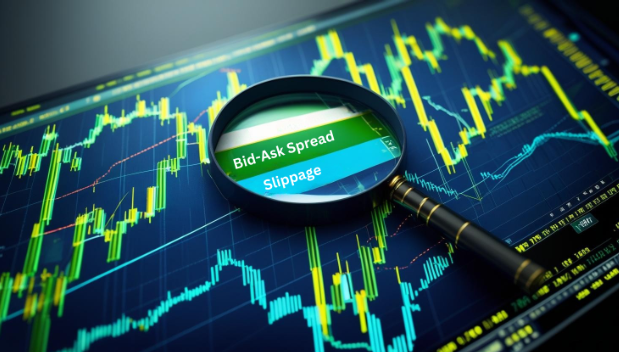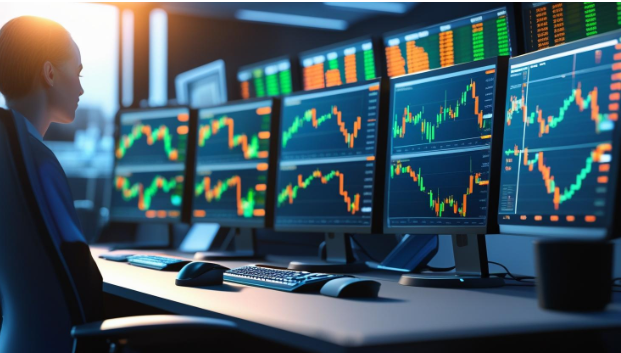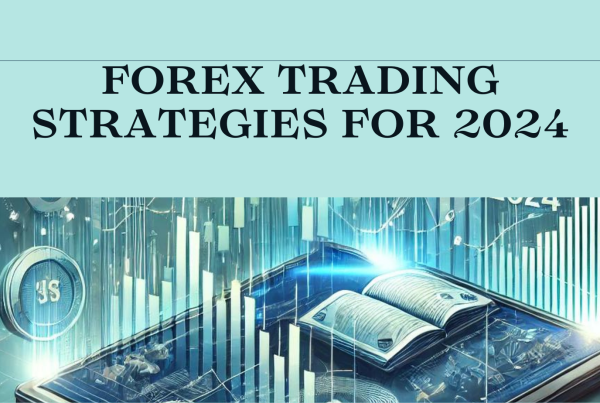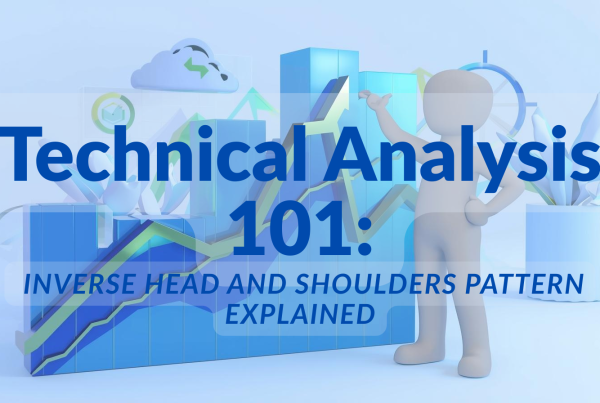Ultimate Guide: What is Liquidity in Forex?

Have you ever wondered why some of your forex trades execute instantly and at the price you expect, while others seem to struggle or move against you the moment you enter? This frustrating experience often comes down to one critical, yet often misunderstood, factor: liquidity. For many new and even intermediate traders, grasping this concept can feel like a major hurdle, creating uncertainty and fear of the market. Without a clear understanding of liquidity, you might be trading blind, unaware of the forces that impact your fills, slippage, and overall trading success. This guide will demystify the topic, explaining exactly what liquidity is in the forex market and why it is the lifeblood of every successful trade you make. You’ll learn how to identify high- and low-liquidity environments and master strategies to navigate each, turning this once-confusing concept into a powerful tool for your trading arsenal.
Introduction to the Foreign Exchange Market

The foreign exchange market, or forex, is the largest financial market in the world, with a daily trading volume that regularly exceeds $7 trillion. It is a decentralized, over-the-counter (OTC) market where currencies are traded. Unlike a stock exchange, there is no single physical location where all transactions occur.
In contrast, the stock market typically operates through centralized exchanges and has set trading hours, whereas the fx market is decentralized and operates 24 hours a day, allowing continuous trading activity across global time zones. Instead, trading is conducted electronically between a global network of banks, corporations, and individual traders.
This immense scale and constant activity give the forex market its unique character, but also make understanding its underlying mechanics essential for any trader. One of the most fundamental of these mechanics is liquidity. The fx market is known for its high liquidity, driven by its large size, 24-hour operation, and decentralized structure, which together influence trading conditions and market participation.

Overview of the Foreign Exchange Market
The foreign exchange market, commonly referred to as the forex market, stands as the world’s largest and most liquid financial market. With a staggering daily trading volume exceeding $6 trillion, it dwarfs other financial markets in both size and activity. Unlike centralized exchanges, the forex market operates in a decentralized manner, connecting a global network of market participants—including major financial institutions, multinational corporations, hedge funds, and individual traders—who exchange currencies around the clock.
A key feature of the forex market is its continuous operation, running 24 hours a day, five days a week. This non-stop trading environment is made possible by the overlapping business hours of major financial centers across different time zones. The market’s exceptional liquidity is driven by the sheer volume of trades and the presence of liquidity providers, such as large banks and financial institutions, who ensure that there is always a buyer and seller for most currency pairs. Market depth, or the ability to handle large orders without significantly affecting prices, is another hallmark of the forex market, making it an attractive arena for traders seeking efficient trade execution and minimal price disruption.
Forex Market Dynamics
The forex market is renowned for its dynamic and ever-changing nature, shaped by a multitude of factors that influence currency prices on a daily basis. Economic indicators, such as interest rates, employment data, and GDP figures, can have a significant impact on market sentiment and drive sharp price movements. Geopolitical events, including elections, trade negotiations, and international conflicts, also play a crucial role in shaping the direction of currency pairs.
Market participants—including traders, investors, and financial institutions—interact continuously, buying and selling currencies in response to new information and shifting expectations. This constant flow of transactions creates a complex web of supply and demand, resulting in frequent price fluctuations and high volatility. The interplay between these diverse market participants is what gives the forex market its unique character, making it both challenging and rewarding for those who can navigate it.
Forex Trading Fundamentals
At its core, forex trading involves the buying and selling of currency pairs, with traders aiming to profit from changes in exchange rates. Each trade consists of simultaneously buying one currency and selling another, forming a currency pair such as EUR/USD or GBP/JPY. The forex market’s high liquidity plays a crucial role in this process, as it determines how easily traders can enter and exit positions.
When market liquidity is high, the difference between the bid and ask prices—known as the spread—tends to be very tight. This allows traders to execute trades quickly and at stable prices, reducing transaction costs and slippage. High liquidity also means that large trades can be processed without significantly impacting the market price, which is especially important for active traders and institutions. Conversely, in periods of low liquidity, bid ask spreads widen, price movements become more erratic, and it becomes more challenging to buy and sell currencies at desired price levels. This can lead to higher trading costs and increased risk, making an understanding of market liquidity essential for anyone participating in forex trading.
What is the Role of Liquidity Providers

At its core, liquidity refers to the ease with which an asset can be converted into cash without affecting its market price. Highly liquid assets, such as stocks or marketable securities, can be sold quickly and with minimal price impact. In forex, it represents the ability to buy or sell a currency pair at or very near its current market rate. The existence of liquidity is dependent on the presence of liquidity providers (LPs). These are large financial institutions, primarily Tier 1 banks like Deutsche Bank, Citi, and JP Morgan, that act as market makers. They continuously quote both buy (bid) and sell (ask) prices for a vast array of currency pairs, ensuring there is always a market to trade in.
Retail traders, who interact with the market through brokers, don’t trade directly with these large LPs. Instead, their brokers aggregate liquidity from multiple providers to offer the best possible prices to their clients. These liquidity providers actively provide liquidity to the market by adding assets and facilitating smoother trading, which helps reduce slippage. This model ensures that when you place a trade, there is an interested counterparty ready to take the opposite side. The robustness of this system directly determines how a trade is executed, impacting the spread you pay and the potential for slippage.
Factors Affecting Forex Liquidity

The level of liquidity in the forex market is not constant; it ebbs and flows throughout the day and week, influenced by a number of key factors. The primary driver is the trading session overlap. The market is active 24 hours a day, five days a week, but liquidity peaks when major global financial centers are open simultaneously. The most liquid periods occur during the overlap of the London and New York trading sessions, as these two centers account for a significant portion of global forex volume. Conversely, liquidity is at its lowest during the hours between the New York close and the Sydney open.
Other factors that influence liquidity include:
- Currency Pair Popularity: Major currency pairs, like the EUR/USD and USD/JPY, are the most heavily traded in the world and, as a result, are the most liquid. Exotic pairs, which involve the currencies of emerging markets, have significantly lower liquidity. These low-liquidity pairs can experience greater fluctuations in the exchange rate, especially during large transactions.
- Major News Events: Economic data releases, central bank announcements, or geopolitical news can cause sudden and dramatic spikes or drops in liquidity. During these times, traders may withdraw from the market, leading to wider bid ask spreads and increased price volatility. Low liquidity during major news events can significantly impact the exchange rate and trading conditions, making it more difficult to execute trades at desired prices.
- Time of Year: Liquidity tends to decrease during major holidays, such as Christmas or the Fourth of July, when many market participants are on leave.
A low spread is a sign of high liquidity, while wider bid ask spreads indicate lower liquidity and less efficient markets.
Understanding why liquidity is important helps traders manage risk and avoid unfavorable trading conditions.
Understanding Market Liquidity
Market liquidity refers to how easily and efficiently a currency pair can be bought or sold without causing a significant change in its price. In the context of forex trading, liquidity is a vital component that affects everything from trade execution to overall market efficiency. Liquidity providers, such as major financial institutions and market makers, play a significant role by continuously offering buy and sell prices for a wide range of currency pairs. Their activity ensures that there is always a stream of orders in the market, allowing traders to transact at competitive prices.
The level of market liquidity is not static; it fluctuates throughout the trading day, often peaking during the overlap of major market sessions when trading activity is at its highest. During these times, the presence of multiple liquidity providers and active market participants leads to tighter spreads and more efficient price discovery. On the other hand, when liquidity is low—such as during off-peak hours or around major news events—spreads can widen, and trade execution may become less predictable. Understanding how liquidity fluctuates and the role of liquidity providers is essential for forex traders looking to optimize their trading strategies and manage risk effectively.
Importance of Liquidity in Forex Trading

Liquidity is not just an abstract concept; it has a direct and profound impact on a trader’s profitability and risk. It influences three key aspects of trading: the bid-ask spread, slippage, and execution speed
The bid-ask spread is the difference between the highest price a buyer is willing to pay and the lowest price a seller is willing to accept. In a highly liquid market, there are many buyers and sellers, which narrows this spread.Higher market liquidity, often driven by high trading volume, results in tighter spreads and more efficient trading.A tight spread is beneficial for traders as it reduces transaction costs.
Slippage is the difference between the expected price of a trade and the price at which the trade is actually executed. It is a common occurrence in fast-moving, volatile, or low-liquidity markets. A lack of liquidity means there might not be a buyer or a seller at your desired price, forcing your order to be filled at the next available price, which could be less favorable. Low liquidity can also lead to a higher cost for traders due to wider spreads and less favorable execution.
Finally, execution speed is directly tied to liquidity. In a liquid market, orders are filled almost instantaneously because there is always a counterparty ready to take the other side of your trade. This is crucial for short-term strategies like scalping, where every millisecond counts.
Identifying Liquidity Zones
In forex trading, the ability to identify liquidity zones can provide traders with a significant edge. Liquidity zones are specific areas on a price chart where there is a high concentration of buy and sell orders, often corresponding to key support and resistance levels. These zones act as magnets for price action, as the presence of numerous orders can lead to sharp moves when they are triggered.
By pinpointing liquidity zones, traders can anticipate potential price movements and adjust their trading strategies accordingly. For example, a cluster of sell orders above a recent high may signal a resistance level where price could reverse or stall, while a buildup of buy orders below a recent low might indicate strong support. Tools such as technical analysis, order flow analysis, and market sentiment indicators can help traders identify these critical areas. Incorporating liquidity zones into your trading strategy allows for more informed decision-making, better risk management, and the ability to capitalize on high-probability setups in the ever-changing forex market.
Understanding High Liquidity Environments

A high liquidity environment is a trader’s best friend. These are periods when the market is deep, with a large volume of transactions and many active participants. High trading volume is a key characteristic of high liquidity environments, leading to efficient trade execution and stable prices. Characteristics of a high liquidity environment include:
- Tight Spreads: The bid-ask spread is at its narrowest, leading to lower transaction costs.
- Minimal Slippage: Orders are filled at or very close to the requested price, even for large lot sizes.
- Low Volatility: High liquidity often correlates with a more stable, less erratic market, though this is not always the case during major news events.
- Reliable Order Execution: You can be confident that your trades will be executed quickly and efficiently.
Trading in high-liquidity conditions allows for more accurate technical analysis, as price movements are a truer reflection of market sentiment rather than a reaction to a few large orders. This predictability is a significant advantage for any trader.
Navigating Low Liquidity Environments

While high liquidity is a blessing, low liquidity environments present significant challenges and risks. These periods occur during trading session overlaps, holidays, or late-night hours. The defining features of a low-liquidity market are:
- Wide Spreads: The lack of buyers and sellers widens the bid-ask spread, making it more expensive to enter or exit a trade. Low liquidity leads to wider bid ask spreads, making it more difficult to execute trades at favorable prices.
- Increased Slippage: The risk of your order being filled at a price far from your entry point is significantly higher.
- High Volatility: With fewer market participants, a single large order can have a disproportionate impact, leading to sharp, unpredictable price swings.
Low liquidity increases price volatility, making price movements more unpredictable. - Delayed Execution: Your orders may sit pending for longer, or not be filled at all.
Trading in a low-liquidity environment is generally not recommended, especially for beginners. The increased costs and unpredictable price movements can quickly erode profits and lead to unexpected losses. Low liquidity can significantly impact the ability to enter or exit trades efficiently, often resulting in higher cost for traders. Traders should be prepared to either scale back their trading or avoid the market altogether during these times. It’s a key part of understanding the forex market, which is why a resource like the article on forex market capitalization is essential reading for any serious trader.
High Liquidity Forex Trading Strategies

Leveraging high liquidity is a key to profitable trading. High trading volume and low spread are key reasons why these strategies are effective in high liquidity environments, as they allow for easier trade execution, lower transaction costs, and tighter spreads.
Here are some strategies that are particularly effective in these environments:
- Scalping: This is a high-frequency trading strategy that involves making a large number of very small profits on short-term price fluctuations. It requires incredibly tight spreads and fast execution, making it a perfect fit for liquid markets like the London and New York session overlap, where high trading volume and low spread are common.
- Day Trading: Day traders open and close their positions within the same trading day. They rely on predictable intraday movements, which are more common when liquidity is high. High liquidity ensures they can enter and exit trades with minimal slippage, a favorable price, and benefit from low spread.
- Breakout Trading: This strategy involves waiting for a currency pair’s price to “break out” of a defined range with high volume. High liquidity is crucial for confirming a true breakout, as it indicates strong momentum, high trading volume, and reduces the chance of a false signal.
- News Trading: While news events can cause temporary volatility, the periods immediately following a major economic release often present significant trading opportunities due to the influx of new orders and liquidity. Traders can capitalize on the strong directional movements that follow, especially when high trading volume and low spread are present.
Conclusion

Liquidity is the most important, yet often overlooked, variable in forex trading. It is the invisible force that determines how easily and efficiently you can enter and exit the market. High liquidity, driven by major trading sessions and popular currency pairs, offers a favorable environment characterized by tight spreads, minimal slippage, and reliable execution. Low liquidity, on the other hand, presents significant risks with wide spreads and unpredictable price movements.

By understanding what liquidity is, identifying the factors that influence it, and learning to trade in sync with it, you can gain a significant edge. Whether you choose to scalp small profits during a liquid overlap or simply avoid trading during low-liquidity hours, mastering this concept will give you the confidence to navigate the world’s largest financial market more effectively. It’s no longer just about where you trade, but also when you trade.
Ready to elevate your trading strategy by mastering the dynamics of the forex market?
Understanding liquidity is just the first step. Maverick Trading & Currencies offers expert guidance and personalized coaching to help you develop and execute strategies for any market condition.
Book a Free Consultation Call with Maverick Trading & Currencies Today!






